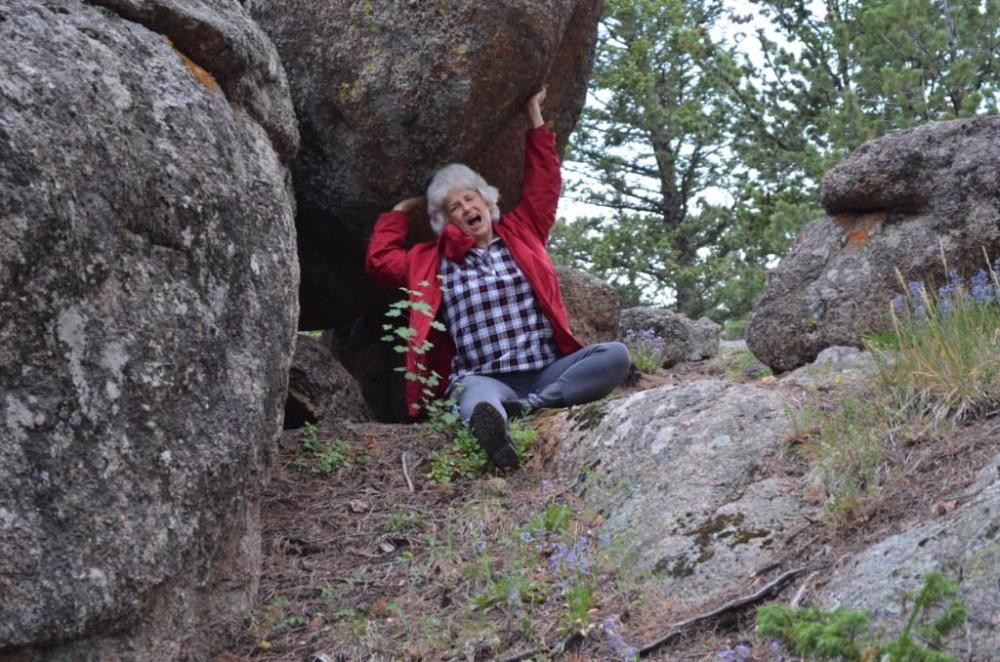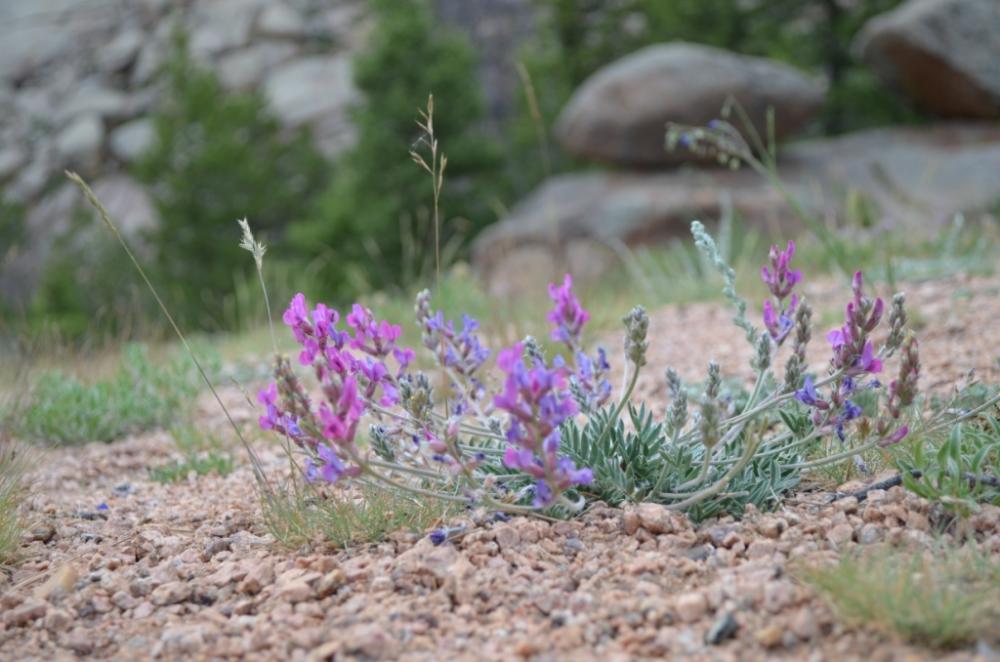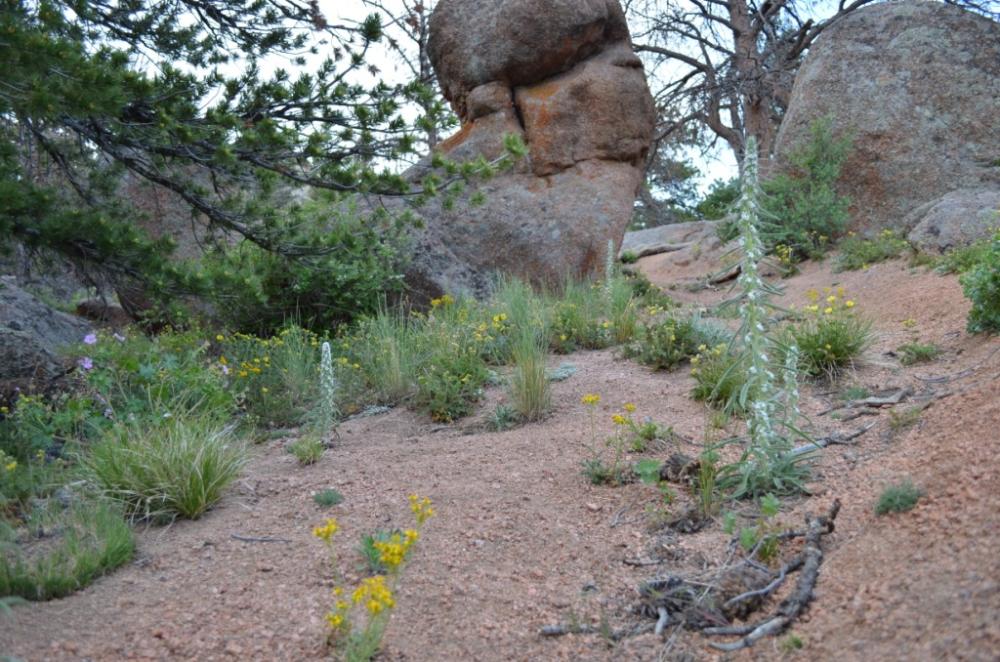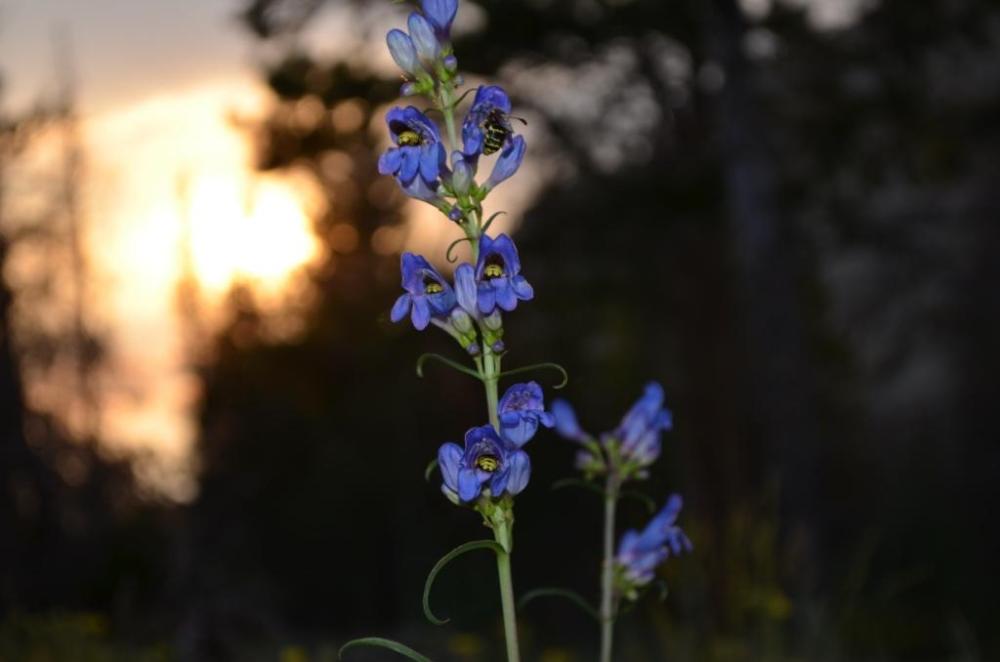To Portland & Victoria, the beginning
I received requests from the Portland chapter of NARGS and the independent VIRAGS of Victoria, BC for late June, 2012. This timing works well for us as shipping and spring sales are complete. Daughter Esther can manage the nursery alone.
I had in mind for this trip that I wanted to see penstemon acaulis and its close cousin, p. yampaensis, in the wild. I would have preferred to start out a week earlier, but couldn't arrange it. That pretty much eliminated seeing these two in flower. No matter, we made preparations for this "field trip", with only 6 days to get to Portland, it meant some extended driving in the range of +1000 km/day. Driving across the belly of the continent from Indiana through Iowa and Nebraska takes 2 full days. By mid-June there were already signs of the severe drought that was taking hold. I have always lived in a rural, farm setting. Droughts have happened before, they are deceiving in that crop yields are usually better than is predicted. Rarely is one catastrophic in the mid-west. Farmers know that flooding in a wet year is far more destructive to crops.
Lupinus argenteus

Penstemon strictus

The dome of heat was just then taking hold Iowa/Nebraska and making haste to the mountains made sense. Driving into eastern Wyoming on I-80 Irene remarked on the white tissues along the road fence. We stopped. The tissues were flowers of Argemone hispida growing in the reddish, sandy soil of SE Wyoming. At ~25cm in height, it is the smallest species and the most northerly reaching of the genus. We have grown this one in our limestone garden for over 10 years. It blooms in July for almost the whole month. Very pretty and delicate, it is cold and heat tolerant and even withstood the excessive rains we had in 2011. Seed is sown in the autumn and left over winter outside. GA-3 doesn't seem to enhance germination, but it germinates well enough on its own. Seedlings should be left in their pots to grow on for a year. There is a one thin straggly root which is best transplanted in early spring. Once growing, it very reliable and thrives in dry sand in full sun and wind. It doesn't take well to pot culture _ therein lies the reason it is rarely listed in catalogues.
Argemone hispida

Crythantha thrysiflora

Late in the day we stopped at a campground near the base of curious, weather-worn rocks, the Vedauwoo. The outcrops of granite are in very odd, improbable arrangements. Most of the campers were young people and the reason soon became apparent once we saw the main rock face.- rock-climbing was the attraction for them. One young couple was on the large granite face. The young woman, though well-secured, was not experienced and her male partner was giving instructions and non-stop encouragement. Perhaps she was thinking about getting a new boy-friend.
Turtle formation


Heuchera bractata

Irene as female Atlas

Penstemon secundiflorus

Oxytropis deflexa

The campground was ~ 7500' elevation so there were interesting plants, and I took photos with new Nikon D-5100 with stock 18-55VR lens. I like the swivel screen as it allows one to set the camera low for plant photos with some sky in the background. Bright conditions are still a trial for focusing; so, when I could not use the manual focus, I said a prayer and took several shots on auto-focus, which is quite good. The extreme ISO speeds make low-light photos possible without flash. Some were up to almost ISO 10,000, and shots were quite acceptable. The shots at the Vedauwoo were all taken after 8 PM.

Gaillardia aristata

Crythantha virgata

The most interesting one is of a penstemon strictus where all the individual flowers having a bee tucked into the corolla for an overnight stay, transforming it into a weird delphinium morph! Irene spied this one. She has the sharp eyes. Had she been taught to shoot, she would have been a champion. Her skill would prove valuable throughout the trip.

It was great to be past the prairie. The rock climber/campers all went to bed early and were very quiet.
Many thanks to Mike Kingen for hunting down the plant ID's!
To be continued'

Comments (0)
Add new comment